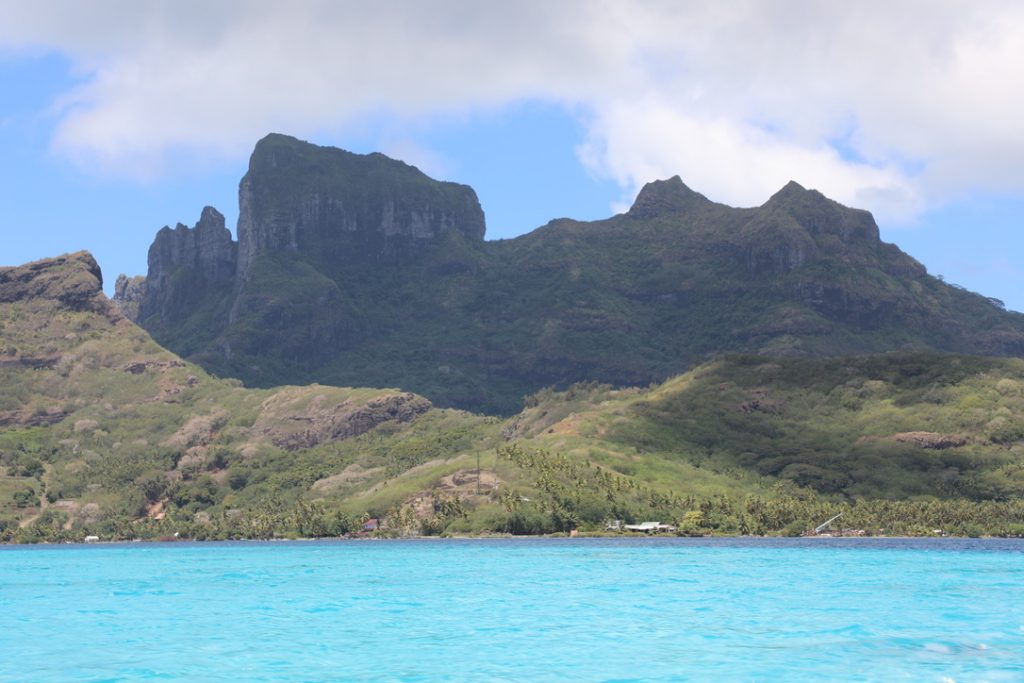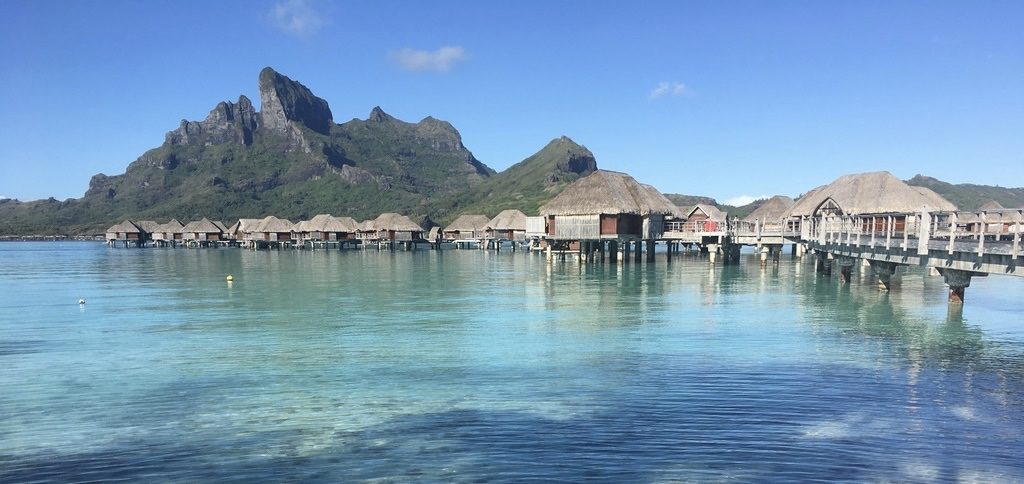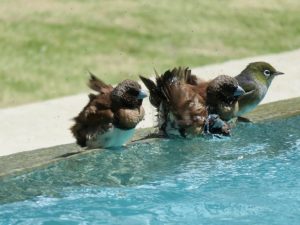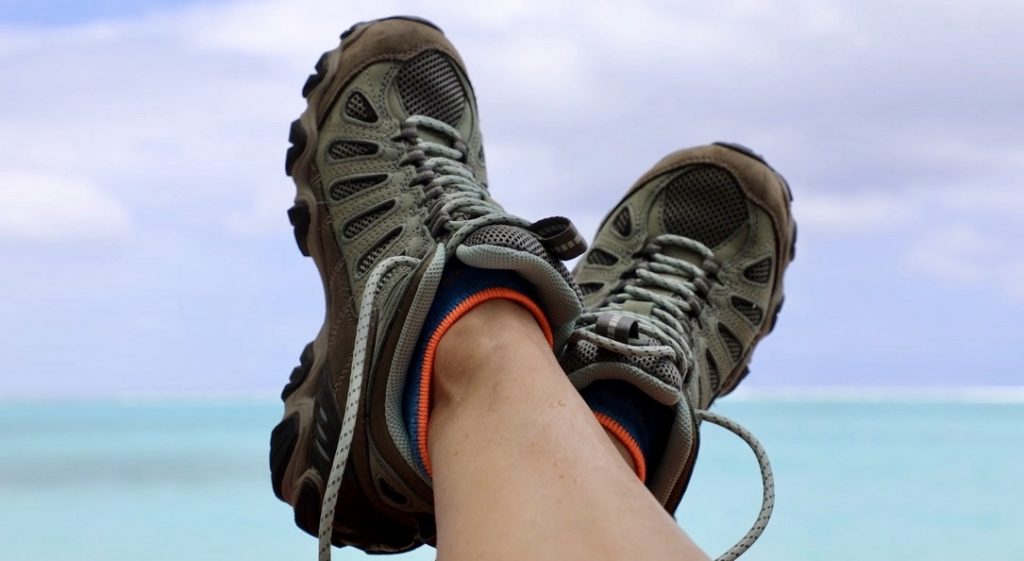
On our way to Vaitape from the Four Seasons Resort, Bora Bora
Sunday morning we caught a boat shuttle to downtown Vaitape, curious to look around, but as the concierge and the locals had said, “There isn’t much to see,” and they were right, but we still enjoyed our outing.
Monday, we ordered room service and ate lunch on the beach, before we packed for our afternoon flight back to Tahiti for a two-night stay at the InterContinental Resort.
As we neared the airport in Papeete, the cloud cover thickened and the crosswinds intensified. The last twenty minutes of the plane ride were so turbulent that the woman across the aisle began to cry, and her seat companion hugged her. Even David admitted, after we touched down, that he had concerns about landing safely.
When we arrived at the InterContinental Resort, we spotted two women who had been on our whale-watching tour on Brando Island. We greeted each other like lifelong friends and they joined us for drinks and dinner. In an agreement between the Brando and the InterContinental Resort, the women had a hotel room at their disposal until they flew out at midnight for LAX. It sure beat hanging out at the airport for hours, killing time.
We had dinner at Le Lotus on the resort grounds, and I have no recollection of what we ordered. We four were too busy comparing notes on our stay at the Brando, their stay on Mo’orea, and our stay at the Four Seasons in Bora Bora, and we talked about future vacations. We have remained in touch via email.




